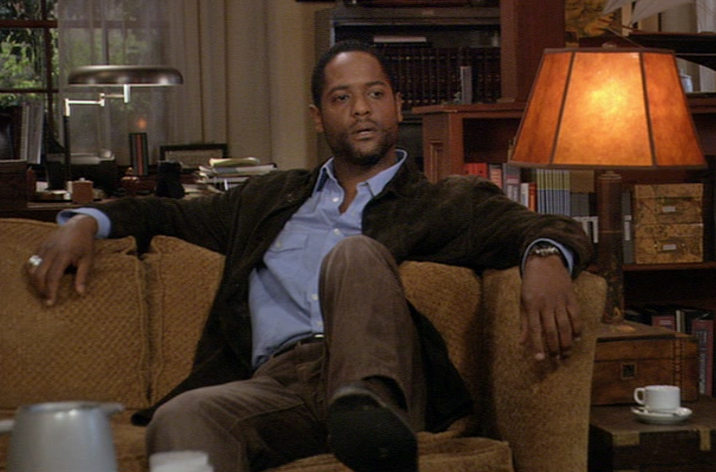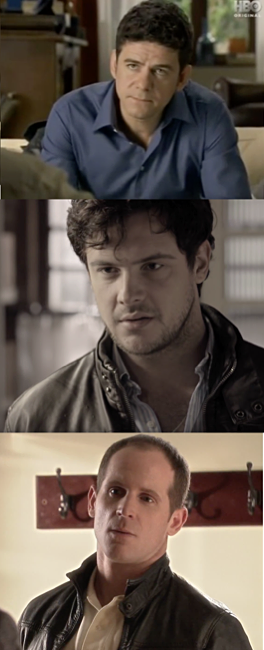It took 20 years to get me to watch In Treatment. I return again to Walt Odets, to whom I had written, in 1996, a nearly angry letter ridiculing psychotherapy. He responded, in part: “If you have a nail in your head, you might well take morphine to relieve the pain. But you might also think about trying to remove the nail and doing something about the hole. Have you ever tried psychotherapy or does it seem irrelevant for you?”
The series repelled many critics, who believed five nights a week of Gabriel Byrne psychoanalyzing patients did not amount to television. Yet Roger Ebert pointed out that television is the medium of the close-up. (On that basis it is debatable whether Tom Hardy’s driving a car for an hour and a half in Locke constituted “cinema.”) The visual language of In Treatment, which takes place in a single room, is expressed in reaction shots. It upholds Bret Ellis’s dictum that television is unable to illustrate grand vistas and cannot employ mood, atmosphere, silence, or pause; television characters show up in the scene, “deliver the information,” then leave.
In Treatment is so televisual it’s been remade 15-odd times. The American version is already a remake. It was decided some summers ago that In Treatment had to be watched from start to finish. And this we did, starting five seconds after dinner. In Treatment has become a lodestar, a companion, a sacred text.
-
The show is written by men and produced and often directed by a black male homosexualist, Paris Barclay. It covers the expected story of transference from a comely female patient, but it understands men well. (Until Dan Futterman started writing the third series, at least. The only thing worthwhile there is the tremendous sequence of set pieces, literally so given the superb décor of her office, between Byrne and his own replacement therapist, a remote ice-cold figure played to a T by a comedienne. Comedians are the ones who can do serious.)
-
Black male actor Blair Underwear simply never looked better as an Air Force pilot who bombed a school in Iraq. He’s lit and photographed to look as gorgeous as possible (surely Barclay’s influence), and everything from his leather jacket to his conspicuous technical wristwatch direct attention to, up, down, and across this beautiful specimen.

And, even though he does not depart from the script, Underwood plays the role as a rebuke to Hollywood racism. The smart, sharp, worldly American soldier can be black, quite contrary to preconceptions you were not sure you had.
-
I watched the Quebec remake, En thérapie. (In fact I consecutively interpreted it, working from speech and captioning. I’ve had this skill for decades and I don’t know where I got it.) The French show is an almost direct translation not of the original Israeli Be’tipul (בטיפול) but of In Treatment. And in this one the Canadian Forces pilot – a Francophone? as if – is portrayed by one of the countless handsome, dark-haired pure laine Quebeckers you could pick off the Montreal Metro the way Bob Mizer chatted up hunks at the L.A. bus terminal. The Canadian fighter pilot was much more angrily open to the possibility of his own submerged homosexualism than on the American show, where, once the truth erupts, Underwood does a superb job of coming unmanned in a span of three minutes.
-
Josh Charles, formerly gay in a 1990s B‑movie, provides a masculine In Treatment performance as the erudite rough-trade husband of a high-achieving bitch with some kind of borderline personality disorder. Watchable in Ellis terms and on any terms, but it’s disturbing when he cries. As it should be.
 Because the many licensed In Treatment variants aired mostly in Central European countries where copyright is an amusing trifle, it was easy to find all those shows online. (Though not Brazil’s. The Argentine version gave us that country’s handsomest man – Mr. LEONARDO SBARAGLIA, unshaven and in a plaid shirting – as the gruff husband.) It was straightforward to match the storylines, hence also straightforward to compare actors and approaches (pictures).
Because the many licensed In Treatment variants aired mostly in Central European countries where copyright is an amusing trifle, it was easy to find all those shows online. (Though not Brazil’s. The Argentine version gave us that country’s handsomest man – Mr. LEONARDO SBARAGLIA, unshaven and in a plaid shirting – as the gruff husband.) It was straightforward to match the storylines, hence also straightforward to compare actors and approaches (pictures).
A show about psychology expresses itself in archetypes first, and no matter how each version glossed the fighter pilot and the gruff husband, I could see male universals. Ostensibly no such things exist. They do.
It reassures me to inhabit a world of the imagination in which Gabriel Byrne is my therapist. In Treatment is a form of therapy I can administer at home. Most applicable were Dr. Paul Weston’s sessions with Walter Barnett, a senior CEO suffering from panic attacks he does not even recognize. Paul sees that Walter has spent a lifetime taking others’ places, looking out for the well-being of everyone and everything else. Walter survives a suicide attempt, but that doesn’t dislodge Walter from his self-narrative that he still doesn’t have anything to live for. Over a couple of episodes, Paul tells him is there is a different Walter inside, a Walter submerged and squelched for a lifetime, a tiny remnant Walter who is trying to live.
PAUL: The defences that held you together your whole life – they just finally wore out.
You have two choices now. We can try to wrap you back up, work on simple behavioural changes… get you back to managing things the way you always have. It’s a valid approach.
WALTER: Or?
— There’s a more challenging route. If we keep going, doing the work that we do, even at this stage of your life, I know that you can achieve a new way of being – with Connie, with Natalie and the boys, but most importantly with yourself. And we can keep exploring those parts of yourself that we’ve just begun to discover.
— [Sighs] I’m an old dog, Paul.
— 70 isn’t old, Walter. It will take work – genuine introspection…. Because you’ve rescued so many others, I want to be there when you go back and rescue yourself.
— Fine, Paul. Fine.
[Gets up, walks to door, takes Paul’s hand]
When do we start?
I have to remind myself from time to time, and have others do the same, that there is a submerged, squelched tiny remnant part of me that wants to live.